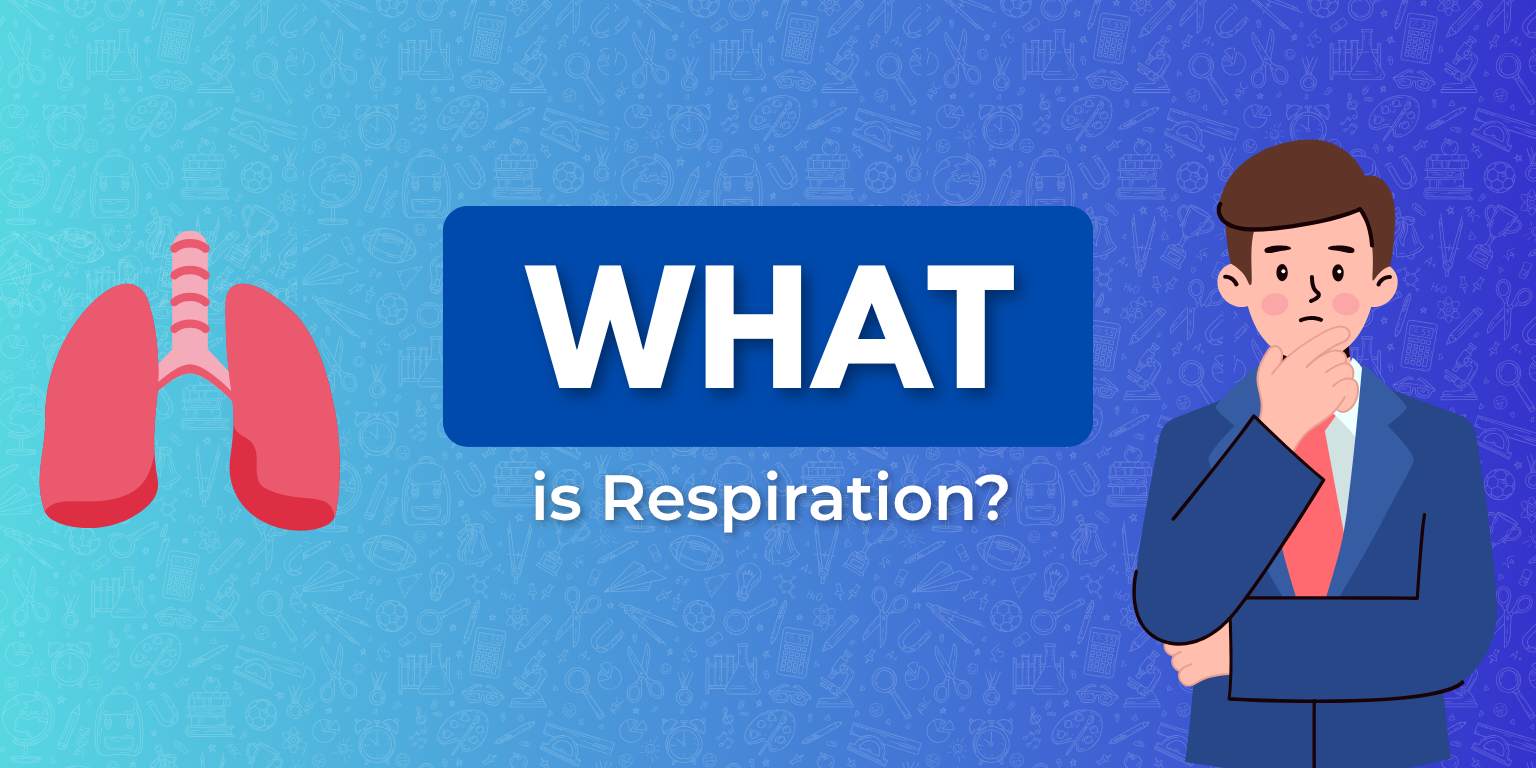Respiration is the process by which living organisms get energy from food.
This blog explains what is respiration, its main types, and the phases involved in each type.
Understanding respiration helps students, learners, and curious minds improve their biology knowledge clearly and easily.
Let’s start with a basic definition and then explore how living cells turn food into energy.
What is Respiration?
Respiration is how cells breathe using food to make energy. It happens in all living beings, plants, animals, and microbes.
C₆H₁₂O₆ + 6O₂ → 6CO₂ + 6H₂O + Energy
- Cells break down sugar and release energy.
- That energy helps cells do their work, grow, move, and stay alive.
- Oxygen is used in one type, but not in the other.
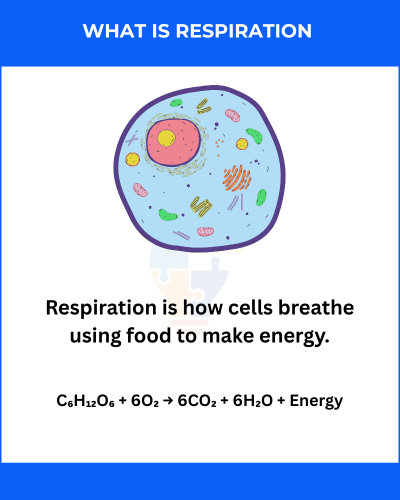
Types of Respiration
There are two main types:
- Aerobic respiration (with oxygen)
- Anaerobic respiration (without oxygen)
“Get success in exams with our 1-on-1 or group biology tutoring sessions.”
Aerobic Respiration
Aerobic respiration uses oxygen to break down glucose. It is more efficient and gives more energy.
C₆H₁₂O₆ + 6O₂ → 6CO₂ + 6H₂O + ~36 ATP
Key Points:
- Occurs in most cells (like muscle cells).
- Produces up to 36‑38 ATP (energy packets).
- Releases carbon dioxide and water as by‑products.
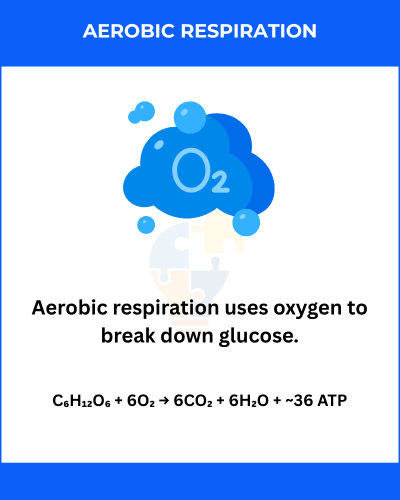
Anaerobic Respiration
Anaerobic respiration happens without oxygen. It gives less energy but works fast.
C₆H₁₂O₆ → 2C₃H₆O₃ + 2 ATP
“Book a free assessment for biology tutors.“
Key Points:
- Happens when oxygen is low (like in tired muscles).
- Produces only 2 ATP per glucose molecule.
- Produces lactic acid in animals, and ethanol in yeast.
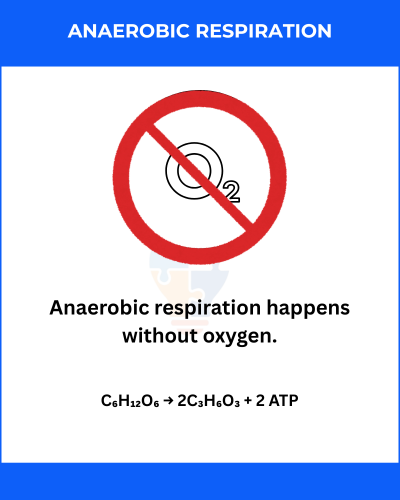
Aerobic Respiration vs Anaerobic Respiration
| Feature | Aerobic Respiration | Anaerobic Respiration |
|---|---|---|
| Oxygen required | Yes | No |
| Energy yield (ATP) | High (36–38 ATP) | Low (2 ATP) |
| End products | CO₂ and H₂O | Lactic acid or ethanol |
| Location in cell | Mitochondria | Cytoplasm |
| Example organisms | Humans, animals, plants | Yeast, muscle in low O₂ |
Phases of Respiration
Both types start with glycolysis. Let’s look at each phase in detail.
Phases of Aerobic Respiration
1. Glycolysis
- Happens in the cytoplasm.
- Breaks glucose into two molecules of pyruvate.
- Makes 2 ATP and 2 NADH energy carriers.
Glucose (C₆H₁₂O₆) → 2 Pyruvate (C₃H₄O₃) + 2 ATP + 2 NADH
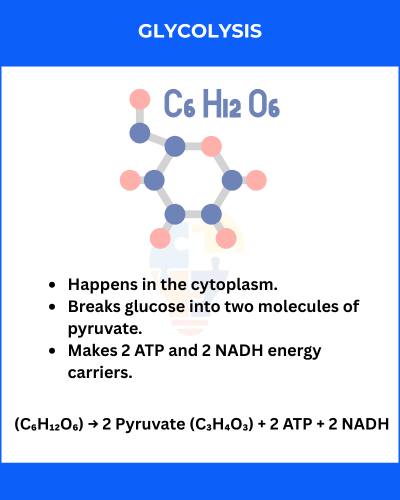
2. Link Reaction
- Pyruvate moves into the mitochondria.
- It is turned into acetyl‑CoA.
- Carbon dioxide is released in this step.
3. Krebs Cycle
- Also in mitochondria.
- Acetyl‑CoA is broken down further.
- Produces NADH, FADH₂, and 2 ATP from each glucose.
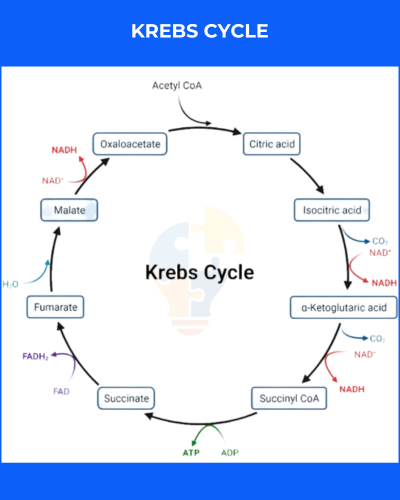
4. Oxidative Phosphorylation
- Uses NADH and FADH₂ to make lots of ATP.
- Oxygen is the final electron acceptor.
- Makes 32–34 ATP and water.
Phases of Anaerobic Respiration
Anaerobic respiration works only in the cytoplasm.
1. Glycolysis
Glucose (C₆H₁₂O₆) → 2 Pyruvate (C₃H₄O₃) + 2 ATP + 2 NADH
2. Fermentation
- In animals: pyruvate → lactic acid.
- In yeast or plants: pyruvate → ethanol + carbon dioxide.
- Regenerates NAD⁺ so glycolysis can continue.
Why Respiration Matters
- Provides energy for all life.
- Releases CO₂ which plants need for photosynthesis.
- Helps muscle cells during exercise.
- Is central in biology and medical studies.
Tips for Remembering
- Think: Aerobic = with air (oxygen), Anaerobic = without air.
- Glycolysis is always first.
- Mitochondria = power house (for aerobic).
- Fermentation = backup plan (quick energy).
Conclusion
Now you know what is respiration, its two types, and the phases in each type. Understanding these steps helps you learn biology clearly and confidently.
Use this guide to remember each stage and practice explaining it in your own words.
Need help studying biology or science? Book a free assessment with TutorHelpMe and get extra support!
FAQs
1. What is respiration in biology?
Respiration is how cells use food and oxygen (or not) to make energy.
2. Which type gives more energy?
Aerobic respiration produces more ATP than anaerobic respiration.
3. Where does respiration happen?
Aerobic steps happen in mitochondria; anaerobic happens in the cytoplasm.
4. What is fermentation?
It is a process in anaerobic respiration to make energy and recycle NAD⁺.
5. Why do animals use anaerobic respiration?
When oxygen is low, muscles produce quick energy but also lactic acid.
